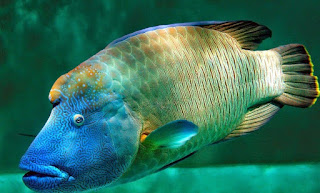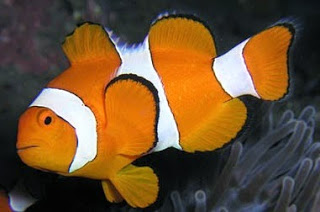Tilapia fish is a fish for consumption that live in fresh water. Characteristics flat-shaped body of black, gray, or brown. This fish is called Mujair because the first to discover this fish is Mr. Mujair in estuaries attack Blitar of East Java in 1939. Fish Mujair itself originates from African waters.
Tilapia fish growing very fast, this is certainly very good for the cultivation of tilapia fish. But as an adult growth acceleration is reduced. Mujair fish can reach 40 cm length. Mujair fish useful as animal protein supply.
If you lack the land and minimal capital, you can try fish farming Mujair with a tarp.
If using ground pool, you need to consider the location factor. The location is good for tilapia fish pond is as follows:
Bebeasan (Notonecta)
Disease
In general, things are done in order to prevent diseases and pests in tilapia fish farming:
Drying bottom of the pool on a regular basis after each harvest.
Pisciculture were completely free of disease.
Avoid excessive stocking of fish exceeds capacity.
The ideal water intake system is parallel, each pool were given a water intake door.
Feeding enough, both quality and quantity.
Handling during harvest or removal of seeds should be done carefully and correctly.
Animals such as birds, snails, fish thousand (lebistus reticulatus Peters) as carriers of the disease should not be allowed into the area perkolaman.
Tilapia fish growing very fast, this is certainly very good for the cultivation of tilapia fish. But as an adult growth acceleration is reduced. Mujair fish can reach 40 cm length. Mujair fish useful as animal protein supply.
If you lack the land and minimal capital, you can try fish farming Mujair with a tarp.
If using ground pool, you need to consider the location factor. The location is good for tilapia fish pond is as follows:
Tilapia fish
Good soil to make a fish pond is clay and does not pivot. Why? For this type of land can accommodate a large water and not leaking.
To facilitate irrigation pond by gravity for tilt between 3-5%.
Tilapia fish can grow normally, if the location of maintenance at an altitude between 150-1000 m above sea level.
Water must be clean, meaning there is contaminated by waste or toxins and not cloudy.
Perkambangan tilapia fish is very good if aira pool can continue to flow. Make this need in the channel and out of the water.
Good water temperature ranges between 20-25 degrees C.
To facilitate irrigation pond by gravity for tilt between 3-5%.
Tilapia fish can grow normally, if the location of maintenance at an altitude between 150-1000 m above sea level.
Water must be clean, meaning there is contaminated by waste or toxins and not cloudy.
Perkambangan tilapia fish is very good if aira pool can continue to flow. Make this need in the channel and out of the water.
Good water temperature ranges between 20-25 degrees C.
Tilapia fish farming
Media preparation
In preparing this maintenance media, which needs to be done is draining the pool for a few days, then liming to combat pests and wild fish as much as 25-200 grams / square meter, given artificial fertilizer in the form of fertilizers, ie urea and TSP respectively with a dose of 50-700 grams / square meter, can also be added in the form of artificial fertilizer urea and TSP respectively with a dose of 15 grams and 10 grams / square meter.
Fertilization
Not only plants that need fertilizing, busisaya tilapia fish also need fertilizing. Fertilization is an aim to increase productivity and ponds, namely by stimulating the growth of natural foods as much as possible. Fertilizer commonly used is manure or green manure with a dose of 50-700 g / m².
Feed for Enlargement
If the level of Productivity and fertility to an already diminishing, then it could be given extra food with the following composition: 25% fish meal, 10% copra meal and fine bran by 65%. This ration composition used in fish farming commercially munjair.
Can also be given food in the form of pellets, which yield 20-30% protein with a dose of 2-3% of the population weight per day, given twice per day ie morning and afternoon. Besides, it is also the condition of the feed in these waters according to the dose or the existing provisions. That is in addition to the feed of the basic media also need to be given additional food in the form of pellets or crumbs crushed with a heavy dose of 10% of the population per day. Administration 2-3 times / day.
Actually feed muajir very easy. The rest of the vegetables in the kitchen, food scraps, leaves leaves etc.
Can also be given food in the form of pellets, which yield 20-30% protein with a dose of 2-3% of the population weight per day, given twice per day ie morning and afternoon. Besides, it is also the condition of the feed in these waters according to the dose or the existing provisions. That is in addition to the feed of the basic media also need to be given additional food in the form of pellets or crumbs crushed with a heavy dose of 10% of the population per day. Administration 2-3 times / day.
Actually feed muajir very easy. The rest of the vegetables in the kitchen, food scraps, leaves leaves etc.
Pest
Bebeasan (Notonecta)
- Dangerous for seed because of the sting.
- Control: pour kerosene into the water 500 cc / 100 square meters.
Ucrit (larvae cybister)
- Clamping bodies shredded fish with fangs up.
- Control: difficult to eradicate; Avoid organic materials accumulate around the pool.
Frog
- Eating eggs fish eggs.
- Control: often throw eggs float; catch and throw him alive.
Snake
- Attacking seeds and small fish.
- Control: do arrest; pool fencing.
Otter
- Eating fish at night.
- Control: berumpun trap pairs.
Bird
- Takes a light-colored seed such as red, yellow.
- Control: given the difficult barrier of bamboo in order to pounce; given tassel or rope barrier.
Disease
In general, things are done in order to prevent diseases and pests in tilapia fish farming:
Drying bottom of the pool on a regular basis after each harvest.
Pisciculture were completely free of disease.
Avoid excessive stocking of fish exceeds capacity.
The ideal water intake system is parallel, each pool were given a water intake door.
Feeding enough, both quality and quantity.
Handling during harvest or removal of seeds should be done carefully and correctly.
Animals such as birds, snails, fish thousand (lebistus reticulatus Peters) as carriers of the disease should not be allowed into the area perkolaman.



































